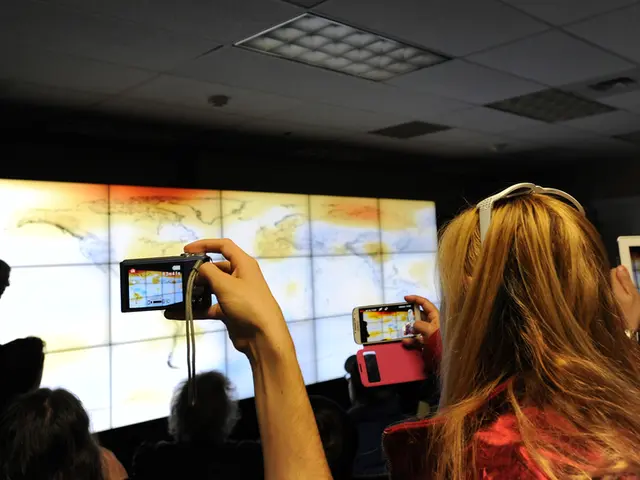Essential Insights to Maintain a Leading Edge in Artificial Intelligence within Augmented Reality Applications
Artificial Intelligence (AI) has been a transformative force in augmented reality (AR) apps, reshaping the way users experience digital content intertwined with the real world. The integration of AI improves AR by creating engaging, interactive environments seamlessly across industries from gaming and education to retail and healthcare.
One significant advantage of AI in AR is its ability to identify and track real-world objects with accuracy, even under complex conditions or varying lighting (Enrichment Data). This ability facilitates a more realistic and immersive experience, with digital content blending effectively with the tangible world. For instance, retail AR apps can now recognize products on shelves, overlapping relevant information or promotions, while educational apps can provide contextual learning content when identifying physical objects.
Another advantage is the improved personalization of user experiences. With machine learning, AI-enabled AR apps adapt content recommendations, interfaces, and contextual notifications according to user behavior, preferences, and environmental context. A fitness AR app, for example, may tailor workouts based on user data and surroundings to optimize performance.
Real-time environmental mapping and spatial awareness are also critical components of AI in AR. This technology processes sensor data from cameras, LiDAR, and inertial measurement units, allowing accurate positioning of digital objects in a user's physical surroundings and preventing issues such as unnatural balancing or clipping through surfaces.
Enhanced security and privacy measures must accompany AI advancements in AR, as AI collects and processes vast amounts of user data and environmental information. AI-driven security mechanisms like anomaly detection, biometric authentication, and data encryption help safeguard sensitive information.
AI also intersects with the Internet of Things (IoT) and edge computing, creating powerful possibilities. By integrating IoT devices and edge AI, AR apps can react instantaneously to environmental changes, delivering immersive and context-aware experiences.
To deliver high-quality visuals and interactions without draining device resources, it is crucial to optimize AI for performance in AR apps. Strategies such as AI-based image compression, frame interpolation, and predictive resource management ensure smooth and responsive AR experiences.
Lastly, the ethical and social implications of AI in AR must be considered proactively. Designing AI systems that are fair, transparent, and respect user autonomy builds trust and mitigates risks of regulatory penalties and reputational damage.
By mastering these ten key aspects – AI-powered object recognition and tracking, enhanced personalization, real-time mapping, natural language processing, AI-driven content generation, AI optimization, enhanced security, IoT integration, cloud services, and ethical considerations – developers, businesses, and innovators can harness the potential of AI in AR, producing engaging, personalized, ethically sound experiences in the rapidly growing AR landscape.
Innovation in AR is further fueled by the integration of smartphones, as they provide a platform for gadgets equipped with data-and-cloud-computing capabilities to process AI algorithms for object recognition and tracking. This merger of technology enables AR apps to offer a more personalized and immersive experience, tailoring content based on user behavior, preferences, and surroundings.
In addition to enhancing user experiences, the amalgamation of AI with IoT devices and edge computing fosters an environment where AR apps can react instantaneously to changes in user behavior and environmental context, ultimately creating engaging, context-aware, and resource-efficient AR experiences.







